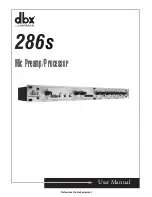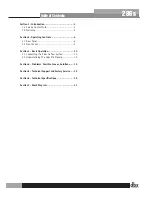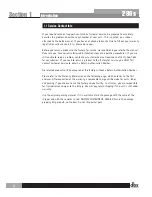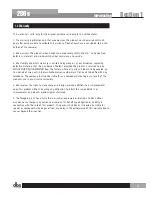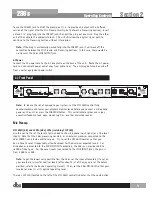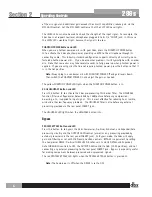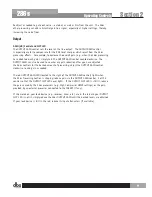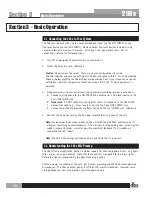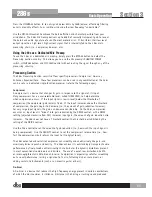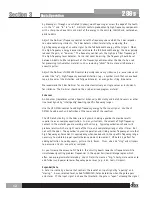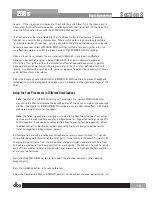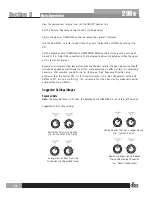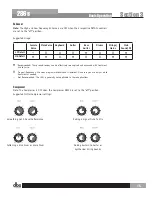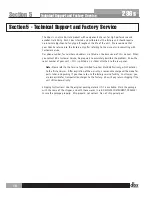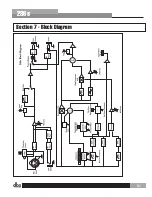
286
Compressor
DRIVE Control
The DRIVE control determines the overall amount of gain reduction by setting the signal
level going into the gain control circuitry. Turning DRIVE clockwise will increase the input
signal, and therefore increase the amount of applied gain reduction. Turning DRIVE fully
counterclockwise (to OFF) allows the compressor to pass all signals unattenuated, effectively
bypassing the compressor.
Higher DRIVE settings can cause the Compressor Section to add substantial gain to signal,
especially with low input levels. For example, setting the DRIVE control to 12:00 can add
up to 20dB of gain to low signal levels. With hotter input levels going into the Compressor
Section (whether from the MIC INPUT, LINE INPUT or INSERT jacks), gain addition due to the
DRIVE control will be less noticeable.
DENSITY Control
Use this control to speed up or slow down the program-dependent release times. The scale
is arbitrary because the release time is automatically varied according to the nature of the
program material (to minimize audible compression-induced side effects). The release rate
is from 0 (a slow release for smooth compression) to 10 (a fast release where compression
follows the envelope of the program very tightly).
There is no absolute “right” way to set the DENSITY control. However, in general, slower
settings are useful for gating out noise present behind vocals and acoustic instruments, while
faster settings are useful for tightening up the sound of percussion instruments (e.g., a kick
or snare drum).
GAIN REDUCTION (dB) Meter
This meter shows the true peak gain reduction in dB. If the red LED at the far left of the
meter lights, no further gain reduction is available.
De-Esser
FREQUENCY Control
Use the control to set the HIGHPASS frequency of the variable filter used in the De-Esser
circuitry. Settings between 4-8kHz will yield the best results for vocal processing, while more
extreme settings allow the 286s to be used in other non-vocal applications.
THRESHOLD Control
Use this control to set the sensitivity of the De-Esser as a percentage of the average program
level at the 286s input. This means that the De-Esser tracks the input level so the amount of
de-essing remains constant with changes in input level.
The De-Esser 1dB and 6dB THRESHOLD LEDs light when the De-Esser is active. These indicate
(in dB) how much sibilance reduction is occurring due to the De-Esser.
Section 2
Operating Controls
7
286s
Summary of Contents for 286 S
Page 1: ...286 User Manual Mic Preamp Processor Professional Audio Equipment ...
Page 25: ...286 21 286s Section 7 Block Diagram ...
Page 26: ...286 22 286s ...
Page 27: ...286 23 286s ...

